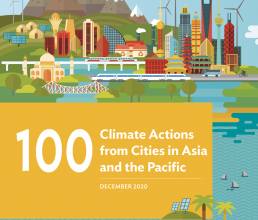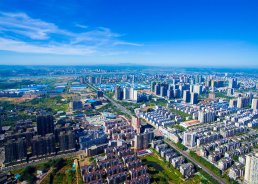First appeared in

Asian Development Bank
100 Climate Actions from Cities in Asia and the Pacific
Xiangtan is installing a community-scale multi-energy and utility management system in the Jinhua Economic and Technological Development Zone to monitor energy, water, and gas consumption and drive energy efficiency gains..
Xiangtan is installing a community-scale multi-energy and utility management system in the Jinhua Economic and Technological Development Zone to monitor energy, water, and gas consumption and drive energy efficiency gains..
Xiangtan will install a community-scale Multi Energy and Utility Management System (CMEUMS), connecting more than 1,300 enterprises in the Jiuhua Economic and Technological Development Zone, located in the northwest of the Xiangtan urban area.
The system will monitor electricity, gas, and water consumption of the industrial plants, businesses and buildings in the zone in order to drive the improvement of operational efficiency of each enterprise. In addition, it will enable the regulation of consumption peaks with differentiated fee structures and encourage trade among plants for wasted heat and/or gas.
238K
ANNUAL TONS OF CO₂ EQUIVALENT SAVINGS BETWEEN 2030 AND 2045
ANNUAL TONS OF CO₂ EQUIVALENT SAVINGS BETWEEN 2030 AND 2045
Using smart technologies and the internet of things, increasing the CMEUMS coverage at the Jiuhua Industrial Zone between 2030 to 2045 is expected to result in average annual savings of 238,185 tCO2e/year assuming a long term growth plan.
ADB provided a loan to cover the $4.5 million project cost, which is a part of the ADB’s $150 million loan to the Xiangtan Low-Carbon Transformation Project.

The Xiangtan CMEUMS software will be developed and installed in the Xiangtan Municipal Big Data Center and all data will be collected in and sent from there (photo by Fang Yang).
The Challenge
Emissions from industries are currently responsible for more than 50% of total emissions from Xiangtan. This program seeks to better understand the energy usage of industry, improve efficiency by as much as 20%, and equip the city for higher levels of renewables in the future.
Co-Benefits
Economic The CMEUMS is helping to optimize energy consumption and balance, savings costs for industrial companies.
Social The CMEUMS creates a culture of collaboration among companies to control peak and non-peak loads and optimize energy and resource efficiency at a zone level.

